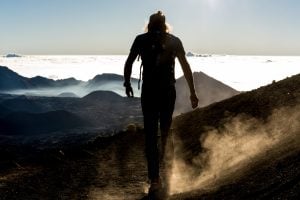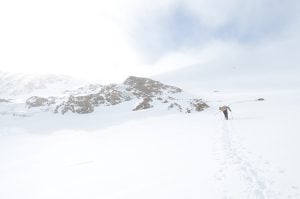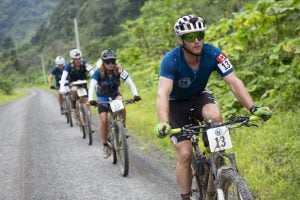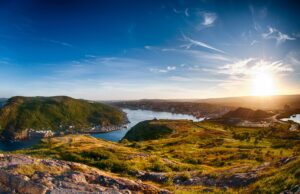
Exploration
Adventure athlete Simon Donato on lessons learned in the backcountry
An excerpt from The Boundless Life: 13 Lessons Learned the Hard Way
- 1736 words
- 7 minutes
Travel
Stand-up paddle-boards are good not just for yoga or for tooling around at the cottage, but as vehicles for travelling deep into the Canadian backcountry

On a sunny morning last June, a crowd gathered on the banks of the Yukon River where it flows, fast, clear and cold, through downtown Whitehorse. The 2016 Yukon River Quest was about to begin. Dozens of boats were pulled up on a long gravel bar; in a few minutes, life-jacketed competitors would run down through the trees, dive into their vessels and set off for Dawson City, 715 kilometres of round- the-clock paddling downstream through the wilderness. The fastest would take fewer than 48 hours to arrive.
The race is an annual ritual, but this year something was different. Alongside the canoes and kayaks were 11 stand-up paddleboards, which looked flimsy next to the bigger boats. Stand-up paddle- boarders, or SUPers, had been permitted to enter the race for the first time, a test to see whether they could handle the competition’s rigours. One of the boards was marked with affirmations in black Sharpie: “Embrace the suck,” and “Discomfort is my muscles cheering.”
But the SUPers presence was also a test of a broader premise: that stand-up paddle-boards are good not just for yoga or for tooling around at the cottage, but as vehicles for travelling deep into the Canadian backcountry. It’s an idea that’s increasingly being embraced by adventurers.

“That’s probably one of the biggest misconceptions of the sport,” says Norm Hann — that it’s relatively stationary, good for a sedate half-day on the lake. “You can run rivers on these things, you can surf, you can tour.” Hann was one of the paddleboarders who braved that first River Quest (in which the SUPers thrived, by the way, some finishing well ahead of more traditional paddlers). He’s a long- time guide in British Columbia, where he has paddleboarded through hundreds of kilometres of the Great Bear Rainforest and now offers SUP tours and training.
Hann credits paddleboarding’s deep- ening incursions into the backcountry to evolving design. Earlier stand-up boards were big, wide and stable. But as a racing scene developed, the boards got nar- rower, longer and deeper — and paddlers realized that these new boards were not only faster but also much more effi- cient, allowing travel over vast distances even with a pile of gear. Now there are boards built specifically for expeditions and touring.
Stand-up paddleboarding also offers convenience and a low bar to entry. “One of the great things about the sport is that it’s pretty user-friendly,” says Hann. “People can get into the sport and have success pretty early.” Inflatable boards can easily be packed into the wilderness by plane, by foot or even by bike.
“I think touring is going to be one of the biggest parts of paddleboarding,” Hann predicts. “It’s a pretty amazing way to travel.”
This story was originally published in our May 2017 issue.
Are you passionate about Canadian geography?
You can support Canadian Geographic in 3 ways:

Exploration
An excerpt from The Boundless Life: 13 Lessons Learned the Hard Way

Travel
Skiing has never really been the sport of the masses, but the rising cost of hitting the slopes combined with the declining expendable income of the middle class has contributed…

Exploration
The team's thoughts on the 2020 Eco-Challenge through Fiji

Travel
Immerse yourself in Viking archaeology and Basque whaling history while taking in Newfoundland’s scenic coastline and incredible geology